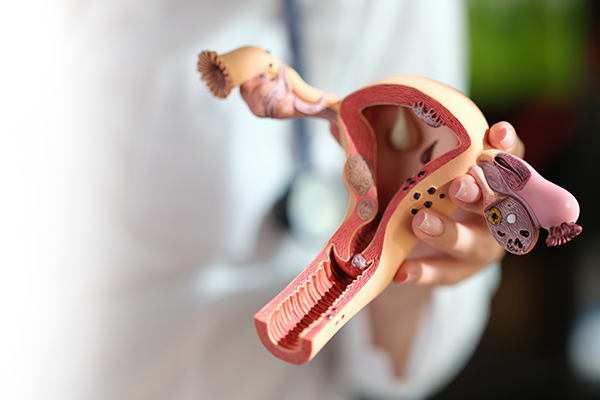Many pregnant women are afraid of natural childbirth and complications such as perineal rupture. In order to avoid ruptures, midwives often choose to incise the perineum of a woman in labor. However, this should be done with the consent of the mother-to-be. What complications does perineal rupture entail and can it be prevented?
According to the definition, perineal rupture is defined as damage to the perineal tissues, which is a relatively common injury during childbirth. It occurs during the II. period of labor during parturition contractions. Perineal fractures are divided into different grades relating to the tissues that have been damaged. The most serious consequences carry damage to the anal sphincter.
Perineal rupture in childbirth- risk factors
To be able to prevent perineal rupture, it is necessary to properly identify the risk factors present in a woman that can lead to perinatal injury to the soft tissues of the vagina and perineum. Influences on the occurrence of perineal ruptures include. late-term labor, a woman’s first natural childbirth, as well as a large birth weight or abnormal positioning of the baby. In addition, the risk of perineal rupture increases in cases of surgical delivery, the use of oxytocin or prolonged II. birth period. In addition, routine perineal incisions in women in labor increase the risk of perineal rupture 3. and 4th degree.
Many women are still trying to reduce the risk of perineal rupture during pregnancy. This can be done by exercising the pelvic floor muscles and using perineal massage. The risk is also reduced if vertical positions are adopted during labor. It is also extremely important for the mother-to-be to cooperate with medical personnel, who at the right moment signal the woman in labor not to push, as this could lead to perineal trauma.
Perineal rupture at childbirth- classification
If a perineal rupture occurs during labor, the doctor classifies it using a special scale. There are 4 degrees of perineal rupture during childbirth:
Grade I – injury limited to the skin of the perineum;
II. Degree – perineal muscle injury not involving the anal sphincter;
III. degree – complete rupture of the perineum and anal sphincter:
III a – injury to less than 50% of the external anal sphincter muscle,
III b – injury to more than 50% of the external anal sphincter muscle,
III c – tear of the external and internal anal sphincter muscle,
IV. degree – occurs when the injury involves the perineum, sphincter complex and anal mucosa.
Rupture vs. perineal incision
Currently, according to the Organizational Standard for Perinatal Care, perineal incision should be a procedure used only in medically justified cases such as fluctuations in the baby’s heart rate or the occurrence of shoulder dystocia. There is a growing body of public opinion calling attention to protecting the perineum and abandoning the routine incision by midwives.
Hygiene in case of perineal rupture
If there is a perineal rupture, the gynecologist will suture the tissues under local anesthesia. Both insoluble and absorbable sutures are used for this purpose. For the former, it is necessary to visit the clinic or hospital 7-10 days after delivery to remove the stitches.
The wound after a perineal rupture should be taken care of to prevent infection. It is important to wash it carefully with water after each toilet visit and dry it thoroughly, preferably with disposable paper towels. Many women complain of pain associated with perineal rupture. Poultices or soaks, as well as anesthetic creams, can provide relief.
Perineal rupture at childbirth- treatment
In the case of perineal rupture I. or II. degree, treatment is based on suturing the wound and caring for it until it fully heals. If an infection develops and there is a fever, for example, antibiotic therapy may be necessary. And when the perineum was ruptured during delivery III. or IV. degree corrective surgery is required.
Complications of perineal rupture at childbirth
According to statistics, about 0.4% of births in Poland end in perineal rupture 3. and 4th degree. The most troublesome complication with this type of damage is gas and bowel incontinence for women. However, it is important to note that not every rupture is accompanied by the aforementioned symptoms. In addition, if the perineum is sutured incorrectly, vaginal or perineal soreness during intercourse may occur. If there are any worrisome symptoms, it is best to see a gynecologist or proctology specialist.
Rate this article:











